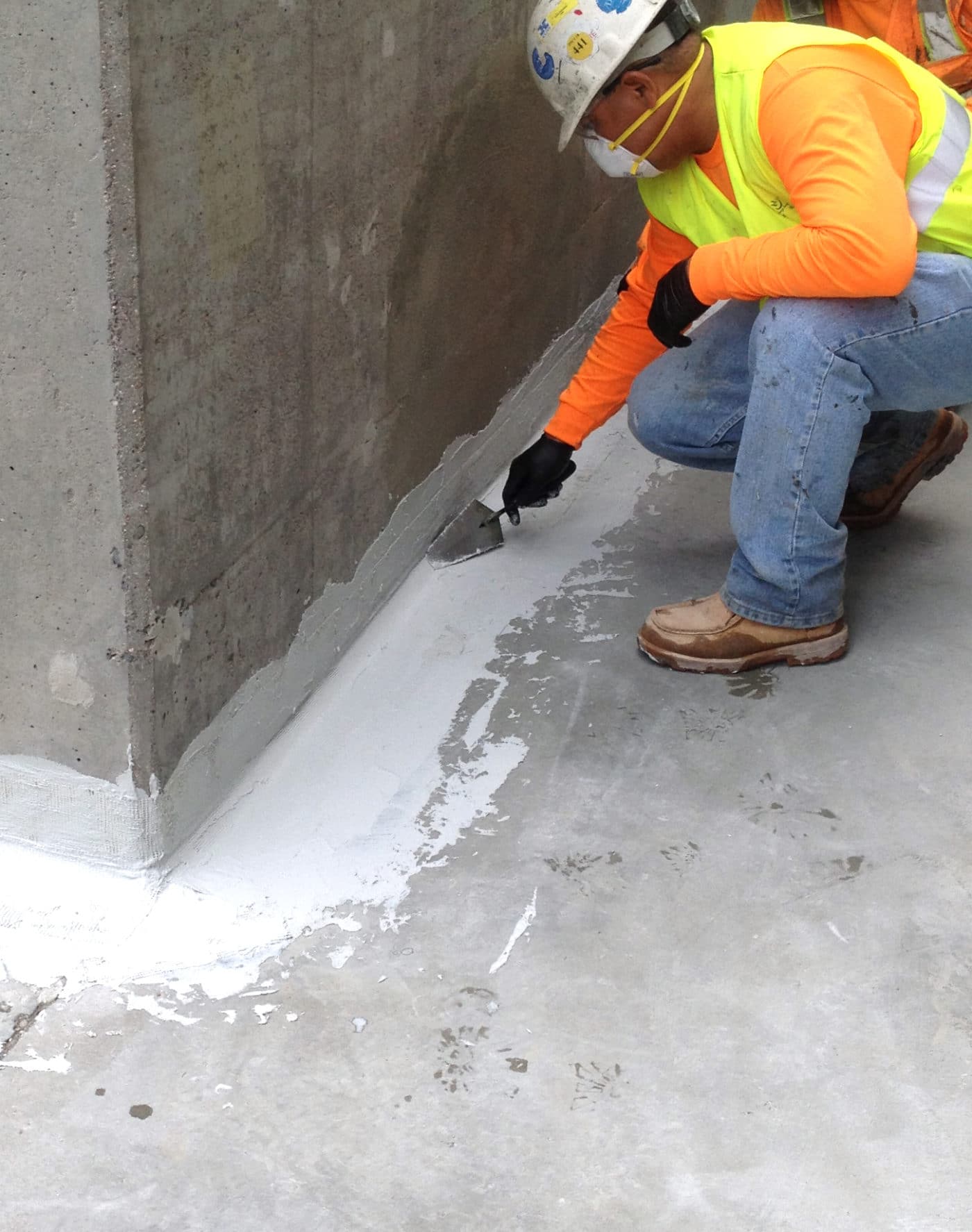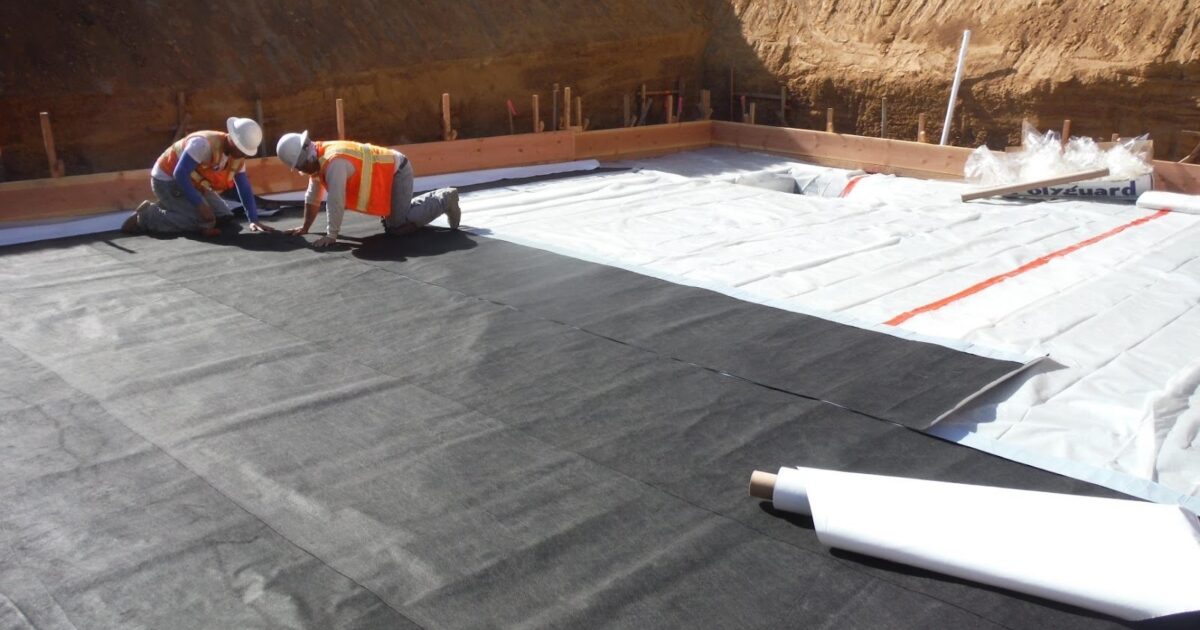Choosing the Right Drainage & waterproofing company Omaha: A Step-by-Step Process
Wiki Article
Kinds of Waterproofing: Exploring the Various Methods and Their Applications
Waterproofing is a vital aspect of building and upkeep. It shields frameworks from the destructive effects of water damage. There are a number of techniques offered, each with its unique applications and benefits. From membrane layer systems to cementitious remedies, comprehending these options is vital for reliable application. The choice of waterproofing technique can greatly affect resilience and durability. Exploring these numerous strategies reveals their unique benefits and potential difficulties, triggering more factor to consider of excellent solutions.Membrane Layer Waterproofing Solutions
Membrane waterproofing systems work as an important obstacle versus water breach in various structures. These systems usually contain thin sheets made from materials like rubber, thermoplastic, or bitumen, which are related to surface areas to stop moisture penetration. They can be set up above or below grade and are specifically reliable in locations susceptible to high water direct exposure, such as cellars, roofs, and foundations.The setup procedure involves cleansing the substratum, using adhesives or primers, and exactly suitable the membrane to assure complete coverage. Membrane systems can be either totally stuck, mechanically attached, or laid loose, relying on the particular needs of the task. They provide durability and adaptability, fitting architectural movements without compromising their waterproofing capacities. These systems can be reinforced with added layers for improved protection. Inevitably, membrane layer waterproofing systems are important for safeguarding frameworks against water damage and keeping lasting honesty.Liquid-Applied Waterproofing Coatings
Liquid-applied waterproofing finishes offer a versatile service for protecting surfaces from water infiltration - Water Solutions. These coverings include fluid materials that, when used, develop a smooth, versatile membrane layer. Their versatility enables application on numerous substratums, consisting of concrete, metal, and wood. The coatings can be used in varied settings, from domestic to commercial settings, making them ideal for roofing systems, structures, and below-grade structures.One significant benefit of liquid-applied finishings is their ability to adapt uneven shapes and permeate splits, producing a robust obstacle against moisture. They usually display exceptional adhesion residential or commercial properties and resistance to UV radiation, ensuring longevity and longevity. Additionally, the application process is normally uncomplicated, enabling quick installation and decreased labor prices. This technique also lessens the danger of water pooling, as the continuous layer successfully directs water far from prone areas. In general, liquid-applied waterproofing coatings are an effective option for comprehensive water protectionCementitious Waterproofing Solutions

Cementitious waterproofing services supply a durable option for frameworks needing trustworthy dampness security. These systems largely make use of a blend of cement, sand, and chemical additives to develop a waterproof obstacle. They are typically put on surfaces such as concrete wall surfaces, structures, and floors, giving a fantastic read a resilient, durable defense versus water intrusion.One of the essential benefits of cementitious waterproofing is its convenience of application; it can be applied utilizing a brush, roller, or spray, making it ideal for various task sizes. In addition, this approach works with numerous surface areas and can usually be made use of together with various other waterproofing techniques.Cementitious solutions are especially reliable in atmospheres where water exposure is a worry, such as cellars or below-grade structures. Their excellent adhesion properties guarantee that they bond well with substratums, providing a solid and impenetrable layer against moisture infiltration.
Bentonite Waterproofing
Bentonite waterproofing is a very reliable approach that makes use of salt bentonite clay to create an all-natural barrier versus water. This technique makes use of the one-of-a-kind homes of bentonite, which increases upon call with water, sealing any kind of prospective leakages and protecting against wetness seepage. It is commonly made use of in various applications, consisting of structure wall surfaces, passages, and maintaining wall surfaces, where water resistance is essential.Bentonite can be used in several forms, such as panels or coverings, giving convenience in installment. Its ability to self-seal makes it an appealing option for areas based on changing dirt or rising and falling water levels. Additionally, bentonite waterproofing is eco pleasant, as it is an all-natural material that does not introduce hazardous chemicals wall waterproofing into the environments.Drain and Exterior Waterproofing Systems
Effective waterproofing frequently involves a mix of techniques, including water drainage and exterior systems. Water drainage systems, such as French drains and sump pumps, are created to reroute water far from frameworks, decreasing hydrostatic stress versus structures. These systems are essential in stopping water buildup that can bring about architectural damages and mold growth.External waterproofing, on the various other hand, involves applying protective barriers to the building's outside. Methods such as the installment of water-proof membrane layers, layers, or sealants can help stop water seepage. This approach not only protects the foundation but also enhances the overall longevity of the structure.Together, drain and external waterproofing systems develop a complete solution to handle water effectively. By implementing these approaches, residential property proprietors can safeguard their investments against the damaging effects of moisture, guaranteeing long-lasting security and safety for their structures.Often Asked Concerns
Exactly how Do I Pick the Right Waterproofing Technique for My Task?
Selecting the appropriate waterproofing method depends upon variables such as task kind, ecological problems, spending plan, and preferred durability. Evaluating these aspects enables educated choices tailored to particular needs and needs.
Can Waterproofing Be Applied in Winter Conditions?
Waterproofing can be applied in winter conditions, but it requires details products and techniques. Cold temperature levels may impact healing times and attachment, requiring mindful selection of products created for low-temperature application.
What Are the Common Indications of Waterproofing Failing?
Typical signs of waterproofing failing consist of visible water discolorations, peeling off paint, wet smells, mold development, and cracks in wall surfaces or structures. Water Solutions. These signs suggest that dampness is penetrating the barrier, endangering its efficiencyHow Much Time Does Waterproofing Last Prior To Needing Maintenance?
The durability of waterproofing differs, normally lasting between 5 to ten years. Variables such as material high quality, ecological conditions, and upkeep techniques influence its click site longevity, demanding periodic assessments to ensure reliable protection against water invasion.Exist Eco-Friendly Waterproofing Options Available?
The inquiry of environment-friendly waterproofing options reveals a growing rate of interest in lasting materials (Yard drainage Omaha). Various all-natural materials, such as plant-based sealants and recycled items, use reliable services while decreasing ecological influence, appealing to eco mindful consumersReport this wiki page